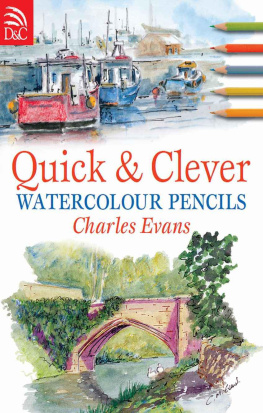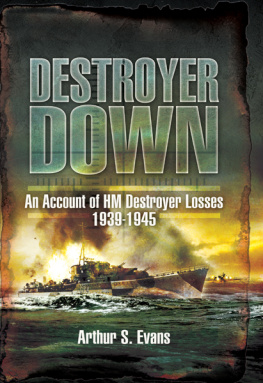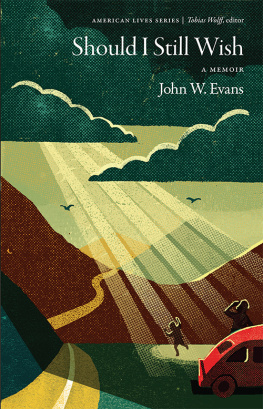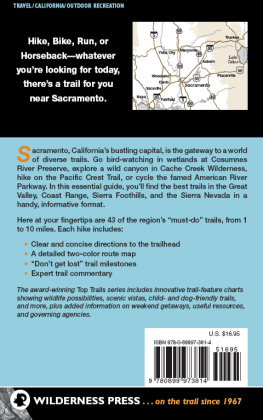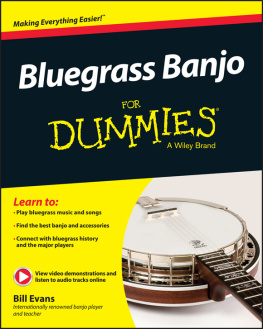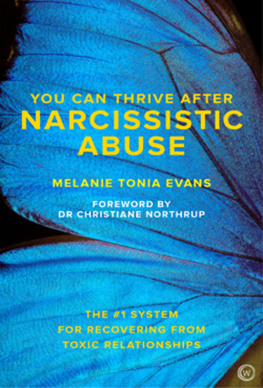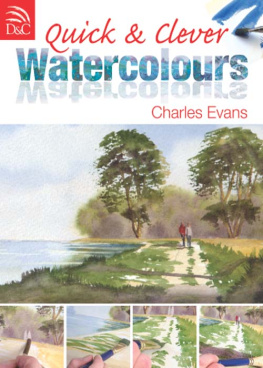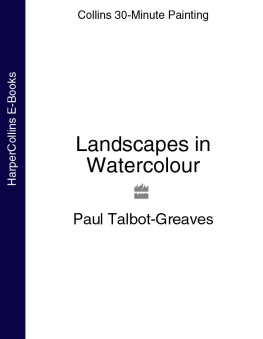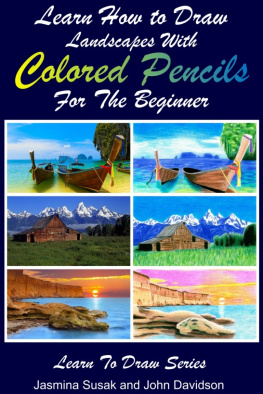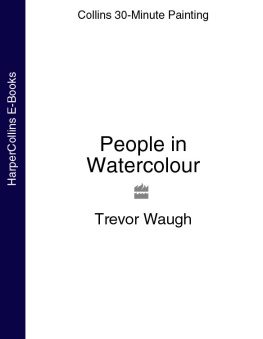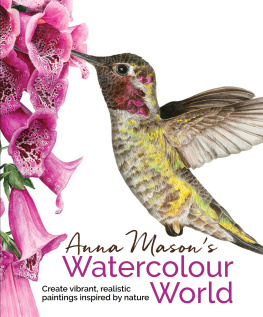
A DAVID & CHARLES BOOK
Copyright David & Charles Limited 2006
David & Charles is an F+W Publications Inc. company
4700 East Galbraith Road
Cincinnati, OH 45236
First published in the UK in 2006
Text and illustrations copyright Charles Evans 2006
Charles Evans has asserted his right to be identifi ed as author of this work in accordance with the Copyright, Designs and Patents Act, 1988.
All rights reserved. No part of this publication may be reproduced, stored in a retrieval system, or transmitted, in any form or by any means, electronic or mechanical, by photocopying, recording or otherwise, without prior permission in writing from the publisher.
A catalogue record for this book is available from the British Library.
ISBN-13: 978-0-7153-2283-3 hardback
ISBN-10: 0-7153-2283-4 hardback
ISBN-13: 978-0-7153-2297-0 paperback
ISBN-10: 0-7153-2297-4 paperback
Printed in China by SNP Leefung
for David & Charles
Brunel House Newton Abbot Devon
Commissioning Editor Mic Cady
Project Editor Ian Kearey
Assistant Editor Louise Clark
Senior Designer Sarah Underhill
Production Controller Kelly Smith
Visit our website at www.davidandcharles.co.uk
David & Charles books are available from all good bookshops; alternatively you can contact our Orderline on 0870 9908222 or write to us at FREEPOST EX2 110, D&C Direct, Newton Abbot, TQ12 4ZZ (no stamp required UK only); US customers call 800-289-0963 and Canadian customers call 800-840-5220.
Dedication
This book is dedicated to my long-suffering mother. She has a saying, When theyre young they break your bank, and when theyre older they break your heart; I must have done both many times, but still she makes the pilgrimage to my studio to do the catering on all my courses and to generally look after me and my clients. For this and millions of other things, Mother, thank you.
Contents
Introduction
This book is aimed at those of you whove always been a bit scared of painting on location for the simple reason that setting up equipment outdoors is a magnet for people coming up to look at you and, worse, making suggestions or criticizing. Here, with a minimum of equipment a sketchbook, a tin of watercolour pencils, one brush, a tiny pot of water or the nearest puddle you can capture the likeness, colour and essence of your subject without needing easels or other such attentionattracting paraphernalia.
In addition, this book is aimed at the person who wants to go and make sketches that can be built up into larger, more finished paintings back in the studio. All too often, people rely purely on photographs, and this has a number of pitfalls you know how you can take a photo on a nice sunny day with strong shadows, and you make sure to focus in on the main focal point in the scene, such as a building or a tree; but when you get the prints back or look at the picture on your computer, the colours are never as you remember them, and the focal point is an indistinguishable dot somewhere in the distance.

By going outdoors and sketching, you capture what you will remember, and you cut out the excess stuff you dont need in a painting. To make a finished picture, its much easier to work from a pared-down sketch than from a photo. Your sketchbook and pencils are light and easy to take on holiday, and will capture really special, personal moments with much more feeling than a quick snap on the camera.

Forget the excuses for not getting out and about, because there really arent any nobodys going to come and look over your shoulder when youre happily ensconced in a corner with your sketchbook, memories and thoughts. So get out there, scribble away with those pencils and have fun!


Materials
Pencils
The pencils I use are Daler-Rowneys range of highquality watercolour pencils, which use very strong artists-quality pigments. As youll see in this book, I dont use a huge amount of different colours, but the pencils arent expensive and its nice to have a particular colour for when you need it, even if this is once a year.
A very important thing to remember with watercolour pencils is that if you use a penknife or craft knife to sharpen them not a pencil sharpener the points dont become brittle or snap easily, and thus last a lot longer.
For sketching outdoors, a useful tip is to wrap a bit of masking tape around the pencil where your fingers hold it: this stops the pencil getting any sweat off your fingers on a hot day or moisture from the atmosphere on a wet one, both of which can make the pencil slip around alarmingly. You can see that Ive done this for the projects in this book.
I dont use an eraser, because if you make a mistake in your outline drawing as I frequently do remember that the pencil is a watercolour one; all you have to do is stroke water over it, and the offending line vanishes!
Brushes
As I said in the Introduction, one of the great joys of working with watercolour pencils is that you dont need a lot of equipment. My main brush for making sketches on location is a No. 8 round Sapphire, which is a fine blend of best-quality sable and synthetic material. For working on larger projects and more finished pictures I also use a 3/4in (19mm) flat wash brush, also Sapphire.

Paper

Watercolour pencils are versatile and can be used on a variety of surfaces. On the whole I tend to use a hardback sketchbook that contains best-quality acid-free cartridge paper. Even though this paper can buckle a bit when I add water to the drawings, it ends up perfectly flat when it dries, as you can see from the sketchbook pages dotted throughout this book. These sketchbooks are available in many sizes; I use A4 ones.
In addition to having hardback sketchbooks, I specify that they are string-bound as opposed to glued the paper is always good in these quality sketchbooks, and you wont lose pages full of memories and sources of reference because they become unglued and fall out. Most of my sketchbooks dont even have covers any more, as theyve been bashed around so much on my travels, but the pages are fine and hold the pencil colours perfectly.
You can also use watercolour pencils as a painting medium on all watercolour paper surfaces: I use 300gsm (140lb) Rough-surface Langton paper. As you can see in the projects here, I also use tinted paper for some work; this comes from a pad of Bockingford tinted papers.
Pens
A few pens are useful, and I often use a plain black ballpoint or fine fibre-tip pen; this isnt line and wash work once the washes are dry, I simply use the pen to make some squiggles here and there to pull out details and firm up some lines.
Next page
